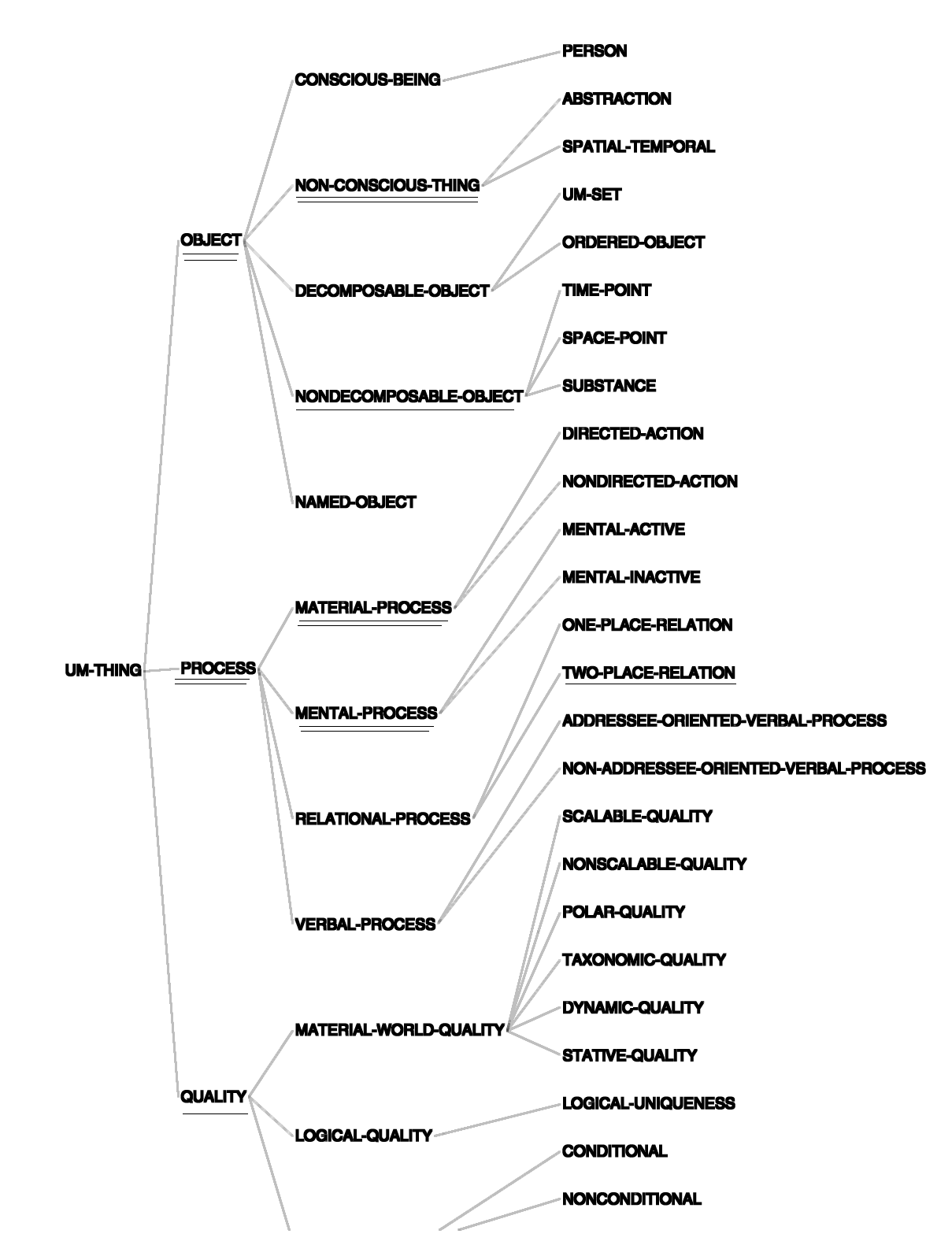The Penman Upper Model
The upper model is a linguistically motivated ontology developed at the Information
Sciences Institute in the late 1980s for mediating between domain knowledge
and a natural language generation system. A paper describing how this works
in more detail is available here; essentially,
a concept is included in the upper model if it has specifiable consequences
for the grammatical constructions that can be used to express it.
The 1989 Upper model (UM89) is documented in detail in:
John Bateman, Robert Kasper, Johanna Moore and Richard Whitney (1989) A
general organization of knowledge for natural language processing: The Penman
Upper Model. Technical Report. Information Sciences Institute. Marina
del Rey, California. [scanned pdf of 1990 version]
The Penman upper model was one early source of input to the higher levels
of organization of some current large-scale general ontologies, such as Pangloss.
It is still used in a slightly modified form by several grammars available for
the KPML natural language generation
system. The upper model provides the semantic types and relations that may be
used in the SPL input expressions accepted by the generator. There is also a
multilingual extension of the upper model, called the Generalized
Upper Model, which is being developed further.
The definition of the presently used version of the upper model (the 'merged
upper model' of 1994) is available in the Loom knowledge representation language
here (zipped loom file).
The Root of the UM89 Hierarchy
( the nodes underlined below can be clicked to reach
further subnetworks: this is a temporary solution)


